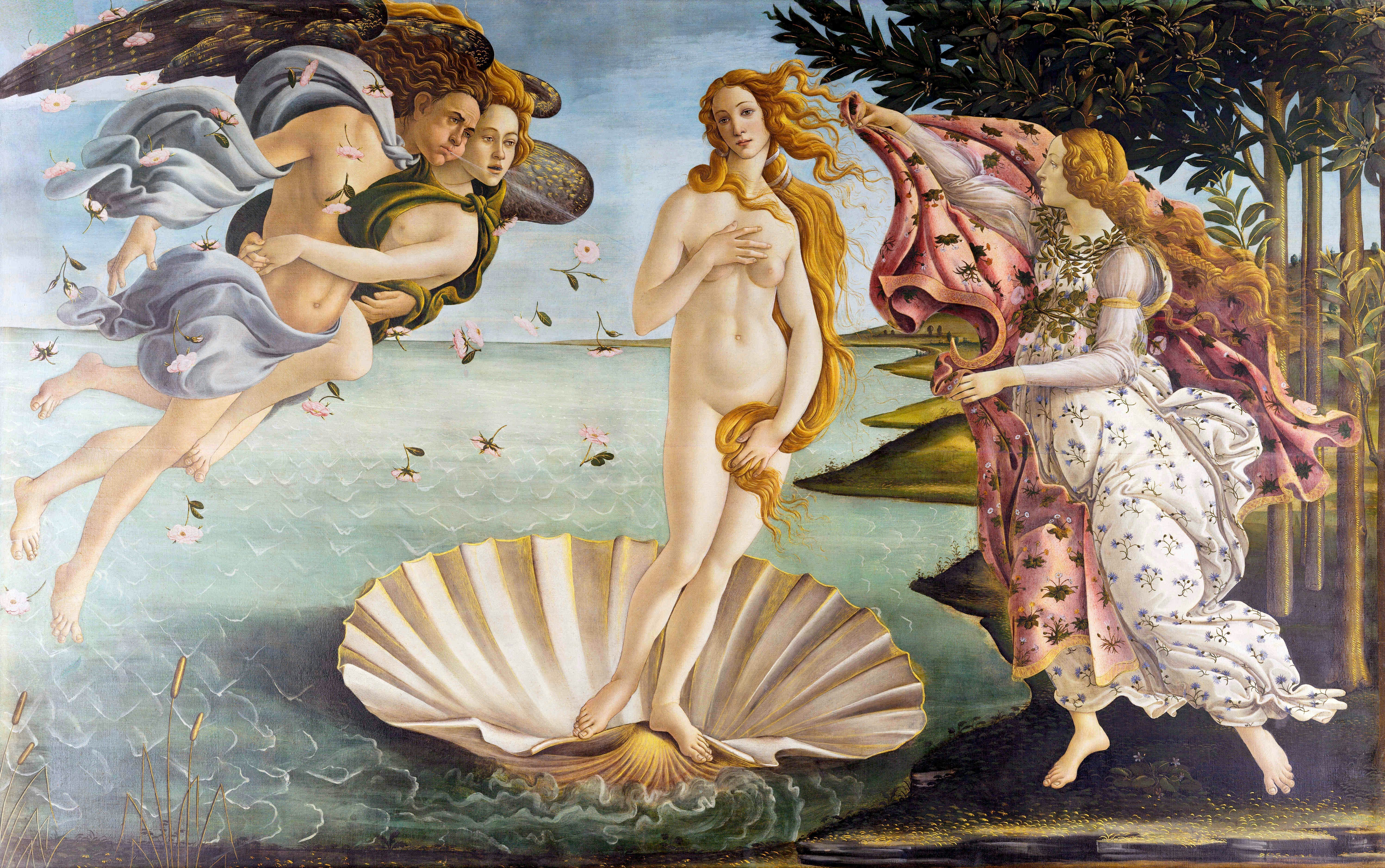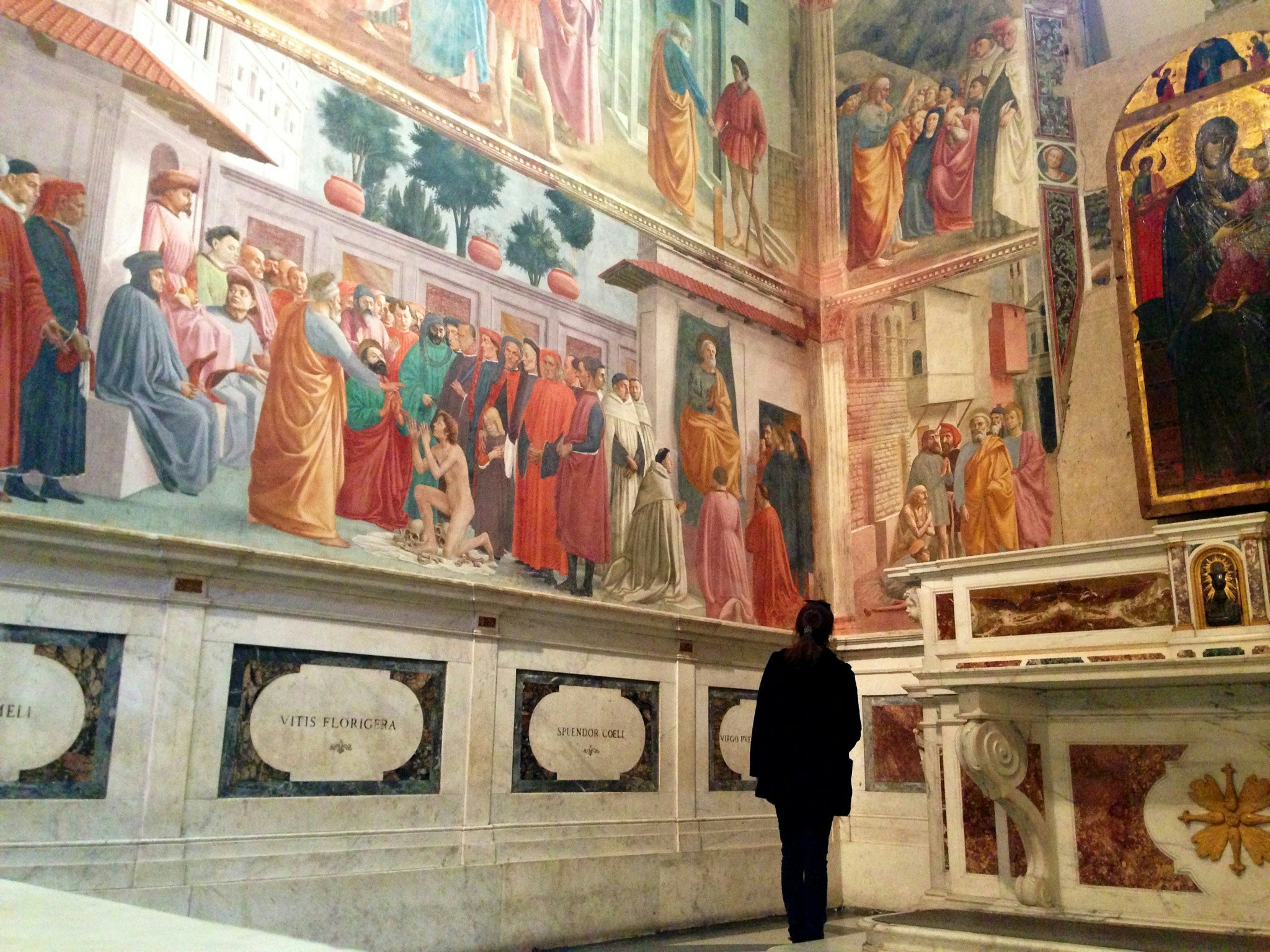

Art and architecture in Florence are world-class and timeless. The city hit the jackpot in medieval and Renaissance times when painters, sculptors and architects bejeweled churches, palaces and squares with a wealth of masterpieces.
Centuries on, reams remain – to an overwhelming extent for most visitors. To catch the major highlights, follow our list and plan ahead.

Brunelleschi’s Dome
The fiery red-brick dome of Florence’s duomo (cathedral) is the city’s most spectacular structure. Admire it from Piazzale Michelangelo to completely swoon. Then climb right up into its guts to understand why Filippo Brunelleschi’s iconic cupola (1420–36) is one of the greatest architectural achievements of all time. Brunelleschi rested inner and outer concentric domes on the drum of the cathedral, allowing artisans to lay four million bricks from the ground up a wooden support frame. The final leg of the climb – up a somewhat hazardous flight of stairs scaling the curve of the inner dome – rewards with an unforgettable 360-degree city panorama.
Botticelli at the Uffizi
Florentine painter Sandro Botticelli (c 1444–1510) charmed the socks off the Medici, who commissioned several works by the early Renaissance artist, many of which are on display at the unmissable Galleria degli Uffizi. Buy tickets for the museum in advance online (firenzemusei.it) and arrive smart at the start or end of the day to get the best (crowd-free) view of his Primavera (Spring; c 1478) and Birth of Venus (c 1484) in room 10-14. Observe the pastel, fresco-like appearance of Venus – painted with a mixture of yolk and light tempura – compared to Primavera’s dark strong colours.

Michelangelo’s David
The world’s most famous statue was commissioned in 1501 to stand high up in the apse of Florence cathedral (the big head and hands would have appeared perfectly proportioned from below). But the biblical warrior ended up in front of Palazzo Vecchio until 1873 when he became the Galleria dell’Accademia’s megastar. Snag advance tickets online (firenzemusei.it) to cut waiting time, and be sure to contemplate Michelangelo’s iconic masterpiece from all angles: from the left, David’s facial expression is Zen and boy-like; from the right it is cold and charged, all set to slay the mighty giant Goliath.
Hidden Michelangelos
David features on everything from souvenir boxer shorts to kitchen aprons, but the unsung stars of Florence’s sensational Michelangelo show are his funerary sculptures hidden in the depths of the ostentatious Cappelle Medicee. Visit in the morning and allow time to linger over hauntingly beautiful Dawn and Dusk (1526–31) on the sarcophagus of Lorenzo de’ Medici, and Night and Day on the sarcophagus of son Giuliano. Notice the mask, owl and poppies entwined within female Night, and observe how muscular her body is – a reflection of the male models Michelangelo always used.

Fra Angelico at Museo di San Marco
Artists are more likely to be sinners than saints. Not Fra Angelico (c 1395–1455), a Tuscan friar, gifted painter and saint whose deeply devotional frescoes mirrored Renaissance humanism. The wonderfully uncrowded Museo di San Marco is the place to view his work (only open mornings so plan accordingly). In 1440 and 1441 Fra Angelico decorated the monastic cells of 44 fellow friars with frescoes – some spiritual, some meditative, some downright frightening. Spot Jesus squashing a nasty looking devil in Archbishop St Antonino’s cell. At the top of the stairs his most famous work, the haunting Annunciation (c 1440), commands all eyes.
Vasarian Corridor
A palace both sides of the River Arno was not enough for the Medici. To avoid rain or having the hoi polloi watch them waltz between sumptuous pads, they built a covered walkway linking the two in 1565. The Corridoio Vasariano runs from Palazzo Vecchio, through the Uffizi, across Ponte Vecchio and through Chiesa di Santa Felicità – peek at the private balcony used by the Medici to attend mass – to Palazzo Pitti.
To explore inside the corridor, strung with the Medici collection of self-portraits, reserve a guided tour with Florence Town or Caf Tour & Travel. Spot Andrea del Sarto (the oldest), Rubens, Rembrandt and Canova.

Frescoes in Chiesa Santa Trinità
Frescoes were the Facebook of medieval Florence. Gen up on the news, views and social commentary of the day with the evocative wall paintings decorating side chapels in Chiesa Santa Trinità. Those by Sienese painter Lorenzo Monaco in Cappella Bartholini Salimbeni evoke the hot topical debate of the Virgin Mary’s Immaculate Conception. Art lovers note: the paintings, dating from 1420, are one of the few remaining examples of International Gothic frescoes in Italy.
The Early Renaissance in Cappella Brancacci
Fire in the 18th century all but destroyed 13th-century Basilica di Santa Maria del Carmine – but spared the masterpiece frescoes in its Cappella Brancacci. The vivid story strip illustrates the life of St Peter (the guy in the orange gown). It was begun by Masolino da Panicale and his pupil Masaccio in 1428, finished by Filippino Lippi in the 1480s and stuck up two fingers to Gothic art. Human beings, including beggars and the sick, dominate the scene, plunging viewers into the early Renaissance’s shock naturalism.
Chapel visits are by guided tour (20 minutes, every 20 minutes); only 30 people are allowed in at a time. Reserve tickets in advance in high season.

Ghiberti’s Gates of Paradise
Be dazzled by one of Italy’s greatest early Renaissance art works – yes, a pair of doors – at the Museo dell’Opera del Duomo. Crafted in the 15th century for the eastern entrance to the baptistery, the filthy black Gates of Paradise (1425–52) were removed for restoration in 1990 – a job that took more than two decades. The 16m tall, bronze gilded doors today shimmer as their goldsmith creator, Lorenzo Ghiberti (c 1378–1455), intended. Study the story of Adam and Eve cast in bronze on 10 square panels on the doors and understand why it took Ghiberti 27 years to complete this exquisite masterpiece.

Piero della Francesca’s Duke and Duchess of Urbino
The warts-and-all portraits of the Duke and Duchess of Urbino by Tuscan painter Piero della Francesca (c 1420–1492) is an Uffizi crowd-puller. The humanist portraits glow with the mastery of light and skilled synthesis of form and colour which made this Renaissance pioneer from eastern Tuscany so famous. His crooked-nosed duke is portrayed from the left side because his right eye was lost jousting. The duchess is deathly-white to show the portrait is posthumous. Surprised by their diminutive size? The double-sided portraits originally slotted into a portable, hinged frame that folded like a book.
















